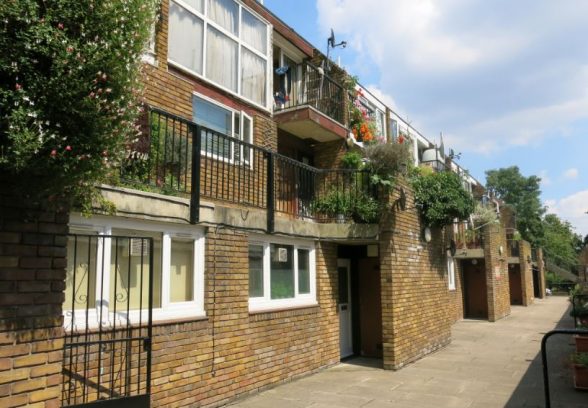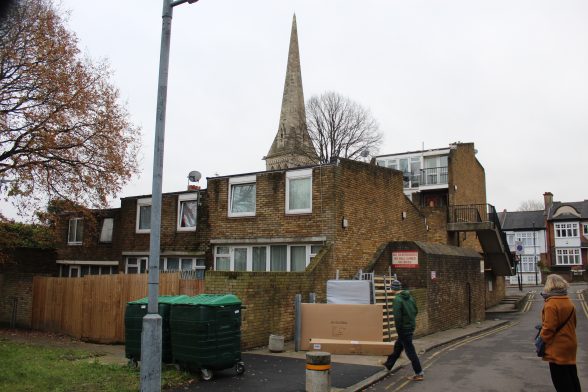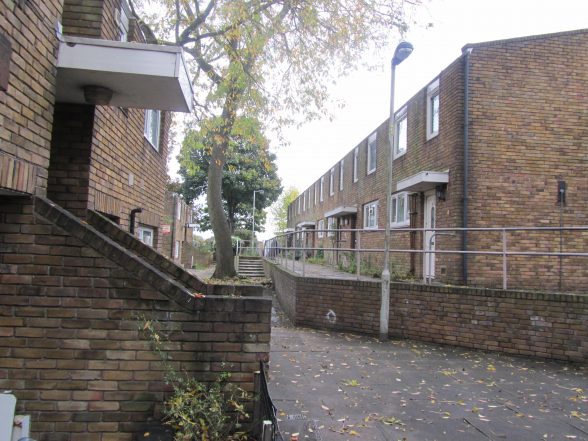This website uses cookies
This website uses cookies to enable it to function properly and to analyse how the website is used. Please click 'Close' to accept and continue using the website.



Plans to demolish 12 homes on the Cressingham Gardens Estate in South London and replace them with 20 apartments are facing fierce opposition from the Twentieth Century Society and local campaigners who fear it could presage the destruction of all the estate’s 300 homes.
Lambeth Council is also proposing changes to the boundaries of the Brockwell Park Conservation Area and the C20 Society and the Save Cressingham Gardens Campaign group are requesting that it is extended to include the estate.
Residents have been fighting redevelopment plans for nearly a decade and are angry that these important proposals have been revealed just weeks before Christmas. A retired NHS nurse in her 80s is among those threatened with losing their homes at the Ropers Walk buildings.
C20 Society caseworker Coco Whittaker said: “The Ropers Walk buildings are an important part of the Cressingham Gardens Estate, which the Society considers to be of considerable architectural, historical and communal significance. Cressingham Gardens is a prime example of a social housing estate that was planned and built in the post-war period by the borough’s in-house architects.
“Ropers Walk buildings are well-constructed and thoughtfully designed and we believe they could be successfully refurbished to provide the residential dwellings required. Their demolition would result in the waste of a valuable resource which has the potential for reuse.”

C20 identified the estate as a potential conservation area in a report of 2017. This was the result of research commissioned by Historic England which explored existing and potential conservation area designation for 20th-century structures and landscapes. The Brockwell Park Conservation Area already includes the main communal green space within the Cressingham Gardens Estate in recognition of the quality of the landscaping. C20 now urges the council to also include the estate’s houses within the conservation area. We would encourage members to respond to this consultation document which is open for comments until 11 January.
These latest proposals come five years after the High Court quashed plans by Lambeth Council to demolish all 300 homes, ruling this would be unlawful as the council had curtailed consultation with residents about options for refurbishing the estate.

Cressingham Gardens was built between 1967 and 1979 by Lambeth Borough Architects under the leadership of Edward Hollamby, who also designed the estate’s eye-catching sunken Rotunda.
Edward Hollamby acquired a reputation as a public servant who “believed not just in high quality architecture, but in the existence and nurturing of the public realm, of public architecture and civic design” to quote his obituary in the Guardian – qualities that are evident in the design of Cressingham Gardens. He joined Lambeth as borough architect and town planning officer in 1963, rising to director of architecture, planning and development, and was influential in the move away from high rise tower blocks towards low-rise patio developments. Under his helm, Lambeth became known for its sensitively-designed high density, low-rise housing – a highly relevant model for today’s housing crisis.
C20 has visited the estate on several occasions and supported an application for listing in 2013. In their listing assessment, Historic England praised the way the design responds to its setting, with skill and sensitivity, “both in the scale and massing of the built elements, as well as through the integration of these elements with informal open spaces which bring a park-like character into the estate.” We were surprised and disappointed when the listing application was turned down.
If you would like to support the Save Cressingham Gardens Action group, visit their funding page

Become a C20 member today and help save our modern design heritage.